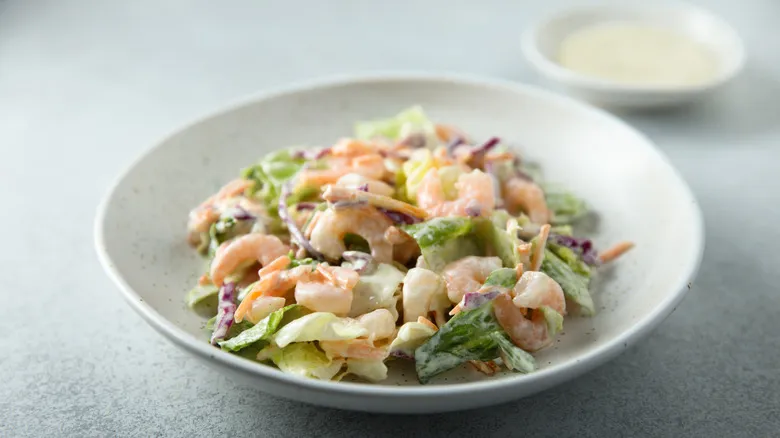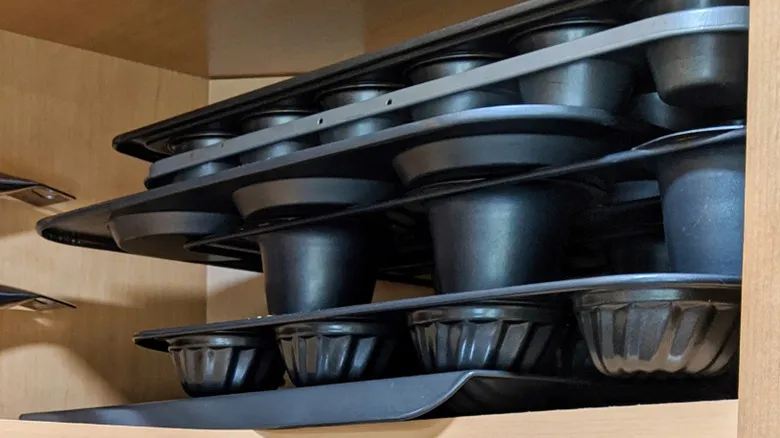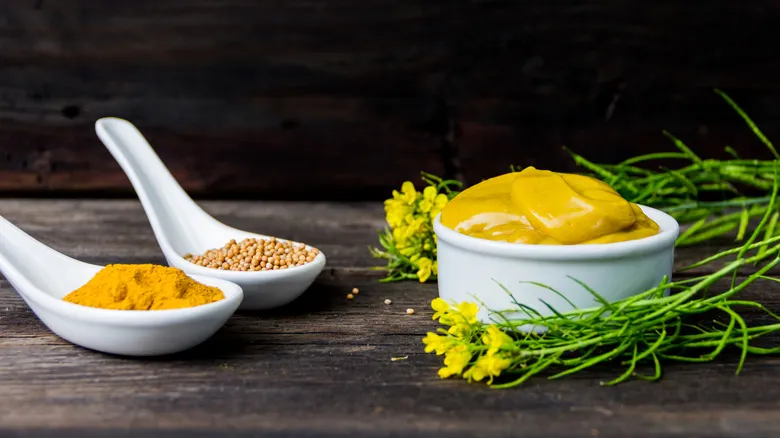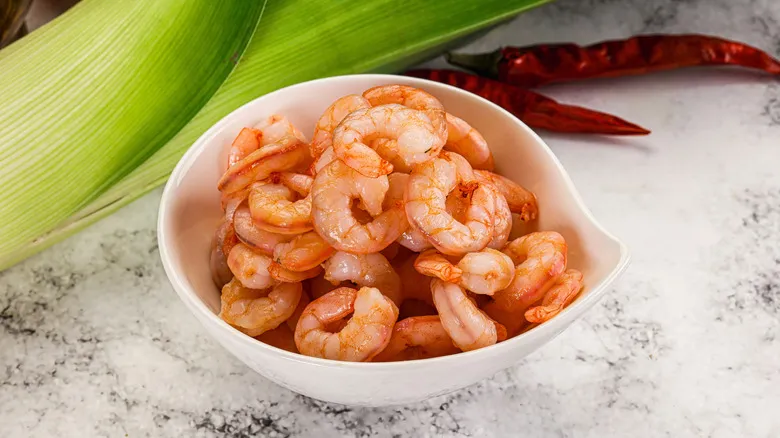Why rinsing canned shrimp is important

Canned goods can sometimes be just as delicious as fresh ones, have a longer shelf life, and are convenient for adding to salads and stews. While canned shrimp doesn't typically substitute for fresh shrimp in most recipes, options like Bumble Bee tiny shrimp can help prevent two common cooking pitfalls: running out of shrimp and not having the right size for salads.
Like many canned products, shrimp are packed in a salt-heavy brine. This aids in preservation but can alter the taste and significantly increase sodium content. The extra sodium is especially noticeable in lightly flavored dishes that often feature canned shrimp, such as shrimp salad sandwiches, shrimp coleslaw, or classic tomato-shrimp aspic salad. If you're monitoring your sodium intake for health reasons, finding ways to lower it is beneficial.
A USDA study revealed that simply draining vegetables like green beans and peas only slightly reduced added sodium, but rinsing them made a considerable difference. The same applies to canned shrimp. A can of Bumble Bee shrimp contains 650 mg of sodium after draining, and rinsing will reduce that amount even further. To prepare, open the can and drain any excess liquid, then place the shrimp in a strainer or colander and rinse thoroughly with cool water. Your salad and taste buds will appreciate it. Don't worry; there will still be enough brine flavor in each tiny shrimp to provide a satisfying salty kick.
Recommended

Perfect Chicago-Style Italian Beef Starts In Your Freezer

The Easy Baking Soda Hack For Bakery-Worthy Pretzels Without Lye

One Genius Storage Technique For Baking Pans Can Open Up Tons Of Kitchen Space

What's The Closest Substitute For Mustard?
Next up

